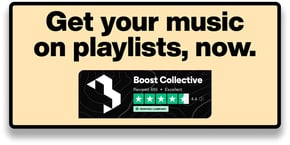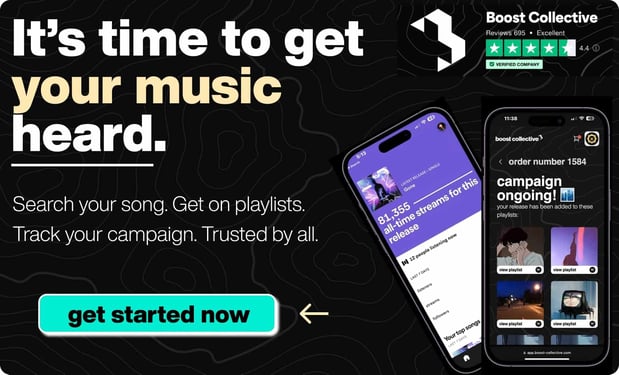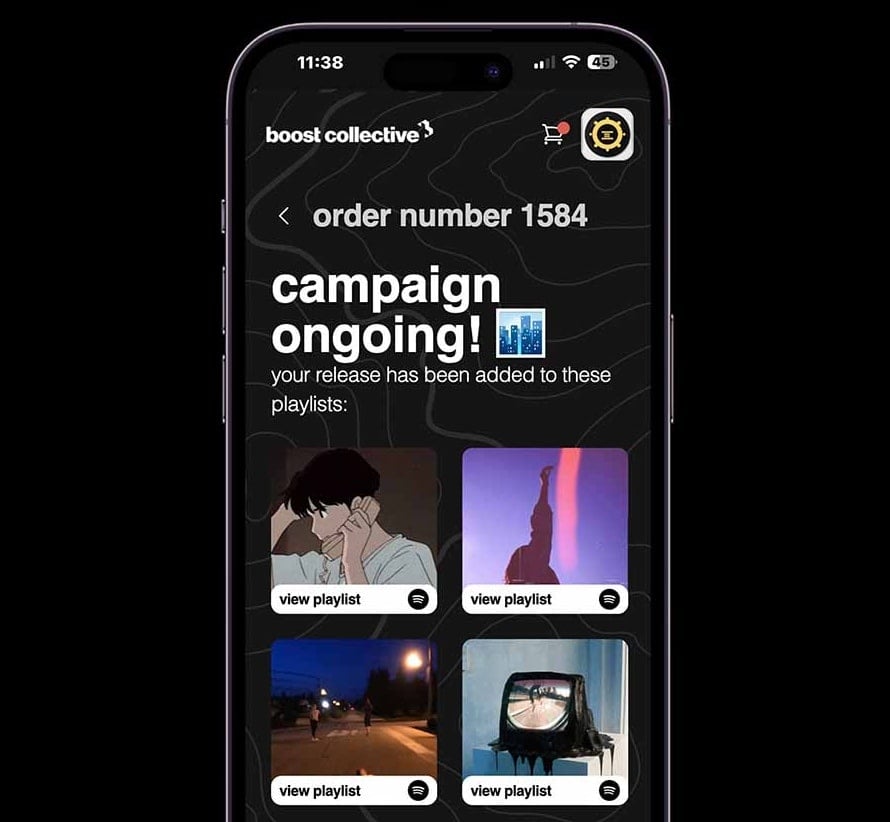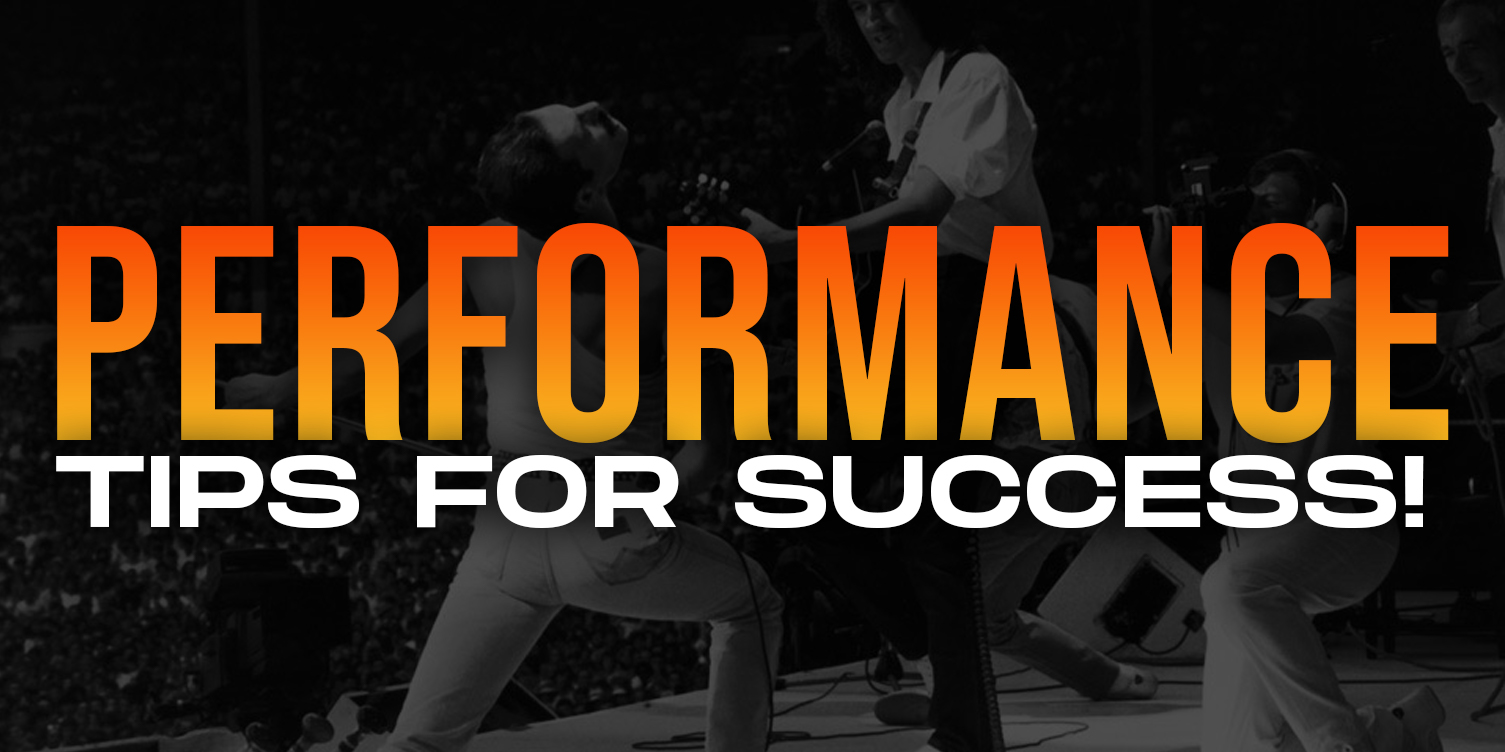
Practice, Practice, Practice
Live performance on stage can be exciting, but if you are not well-prepared, it can also be nerve-wracking. It is essential to rehearse before taking the stage because of this.
Do you want to get your music on 150+ streaming platforms for 100% free?
Want to get your music on active & relevant playlists that actually get results?
Get your music heard now 👇
Boost Collective is the #1 trusted source of music distribution for artists - You can protect your content and earn royalties whenever it is being used. Enjoy!
When performing live on stage, rehearsal is essential for the following reasons:
First off, whether it's a song or a setlist, practicing helps you get more familiar with your material. It enables you to learn the music, chords, and lyrics by heart. This familiarity enables you to execute on stage with greater assurance and accuracy.
Secondly, by practicing your songs or set list, you can spot your weak points in technique, tempo, or timing. You can work on these things and raise your performance by exercising regularly. You might make use of this opportunity to experiment with various song versions and arrangements.
Lastly, practicing makes it easier to be ready for unforeseen circumstances on stage. You'll be more prepared to handle a technical issue with your equipment, for instance, if you've practiced your songs a lot. Also, you'll be able to improvise more effectively, whether it's by adding an additional solo or changing the tempo.
When getting ready for a live performance, there are additional crucial aspects to take into account in addition to practicing. For instance, picking a reputable location can have a significant impact on the caliber of your performance. During your presentation, interact with the audience to build a stronger connection with them. These aspects, though important for a good live performance, cannot replace practice.
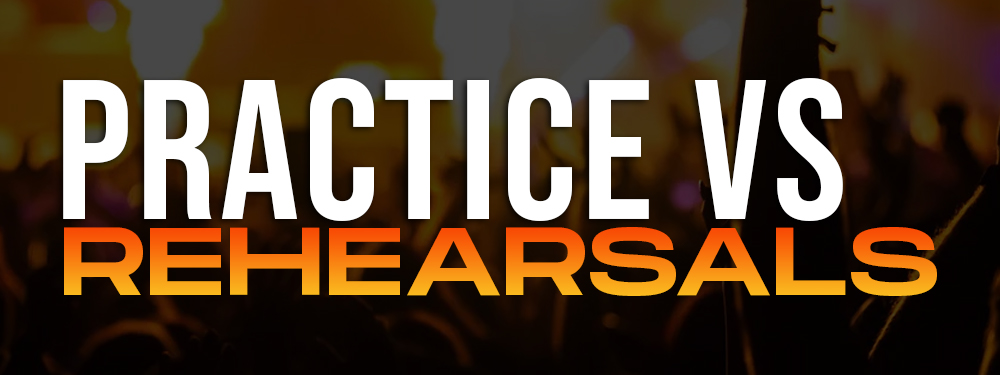
Practice vs Rehearsals
Understanding the distinction between practice and live rehearsals is crucial when getting ready for a live performance. Below is a list of each term's definitions and how they vary:
According to the music business, practice is solitary work on particular performance skills or elements, such as reviewing phrases or experimenting with new bowing techniques. Practice is intended to help you become more proficient and at ease with your instrument or material.
Live rehearsals go one step further by nearly replicating the environment of a live performance as feasible. For instance, you might practice your set list in front of a live audience or in a room with acoustics comparable to the one where you'll be performing. Live rehearsals provide you the chance to fine-tune your performance and gain a feel for what it will be like to perform in front of an audience.
In conclusion, getting ready for a public performance involves both practicing and having live rehearsals. While rehearsals and live rehearsals provide you the chance to polish your amazing performance and gain experience performing in front of an audience, practice helps you develop your talents and become more at ease with your content. You may improve your chances of performing well on stage by balancing both solo practice and group practice.
Best Talent Agencies For Musicians!
Stage Presence
For any live performance, whether it be in music, dance, or public speaking, stage presence is a crucial component. It alludes to the vitality and charisma that performers bring to the stage, and it has the power to create or destroy a show.
Making eye contact on stage is a crucial component of stage presence. Eye contact between performers and spectators fosters a relationship and involves them in the performance.
Making eye contact with the audience can help artists connect with them on a deeper level, making it a crucial component of stage presence. Establishing rapport and trust with the audience is a good method to gain their trust.
It can also enable performers to express emotion and energy more effectively. Establishing eye contact with the audience can also assist performers to hold their interest and keep them interested throughout the entire performance.

Stage Freight
Anybody, from beginning speakers to seasoned performers, can suffer from stage fright, also known as the fear of performing in front of an audience. Thankfully, there are practical strategies to lessen or even get over stage anxiety.
Preparation is a key strategy for preventing stage fright. This involves giving your speech, presentation, or performance as many times as necessary until you feel confident in it.
Being well-prepared can boost your confidence and lessen your nervousness.
Using relaxation techniques is another method for preventing stage fright. Before you perform on stage, you can reduce your anxiety by meditating or deep breathing.
In order to relieve tension, you can also try progressive muscle relaxation, which involves tensing and releasing various muscle groups throughout your body.
Improvisation
For musicians, the ability to improvise is crucial, especially when playing live music. It enables musicians to personalize their work and interact with their listeners.
Singing, oohs, aahs, and even yodeling are all examples of live music improvisation. Improvisation is a common technique used by live music performers to spice up and enliven their performances.
They might devote a portion of their performances to impromptu singing and invite the audience to join in. This is a fantastic technique to include the audience and make an unforgettable impression.
A potent improvisational tool is listening to and copying sounds. You can find methods to enhance and supplement the music all around you by paying attention to it.
Don't be afraid to try new things and take risks, and try not to be too hard on yourself if things don't go exactly as you had hoped.
As spontaneity and fun are key components of improvisation, take pleasure in the process and allow your imagination to run free.
Don't forget to laugh, be instinctive, and not be too hard on oneself. Improvisation may elevate your live performances with practice and confidence.
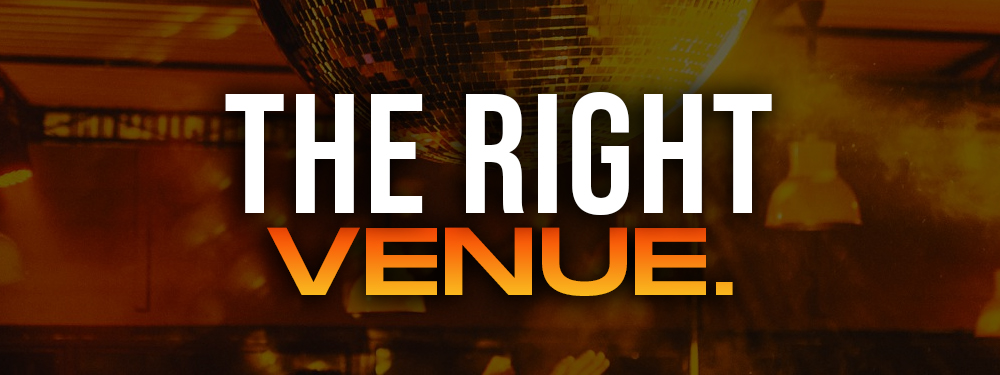
Choose A High Quality Venue
Making the right venue selection as a live music performer is essential to the success of your show.
A top-notch location can guarantee a good sound system, create a unique and engaging experience for visitors, and offer a pleasant environment for the performer and the audience.
On the other side, a venue that was not carefully picked can ruin the event for everyone.
What Are Music Publishing Royalties?
The sound system's quality is one of the most important things to take into account when selecting a location. Each instrument may be heard clearly and the drum beat can be felt simultaneously thanks to a good sound system.
This makes sure that the music is presented to the audience in the greatest way possible, resulting in a more pleasurable experience for everyone.
The environment of the location is a crucial factor as well. A top-notch location needs to offer a cozy and distinctive atmosphere that improves the experience for visitors as a whole. This may involve elements like seating, design, and lighting. A well-thought-out setting may make attendees feel at home and contribute to making the event something to remember.
Also, selecting a top-notch location can be advantageous for the artist's career.
A well-known and recognized location might draw a bigger crowd and provide the artist with more exposure. Also, it may present chances for collaboration and networking with other musicians and business leaders.
Ultimately, selecting a top-notch location is essential for a live music artist's performance.
A top-notch location can create a welcoming ambiance, guarantee that the sound system is up to standard, and provide guests with a distinctive and exciting experience, eventually resulting in a more pleasurable event for everyone involved.
Plan Your Setlist Well
A well-planned setlist is essential for a successful live performance since it establishes the mood for the entire show and affects how engaged the audience will be.
The sequence of the songs, the transitions between them, and the intensity levels are only a few of the variables that go into a well-planned setlist. It involves more than just picking the arrangement of the music; it's an artistic endeavor that calls for great thought and preparation.
Keeping the audience interested and enthusiastic throughout the performance is possible with a carefully thought-out setlist. It contributes to the development of momentum and energy levels, ensuring that the audience stays with you until the conclusion of the performance.
A good live performance depends on a carefully thought-out playlist. It aids in maintaining audience interest, showcasing your abilities, accommodating their preferences, and producing a seamless and pleasurable performance.
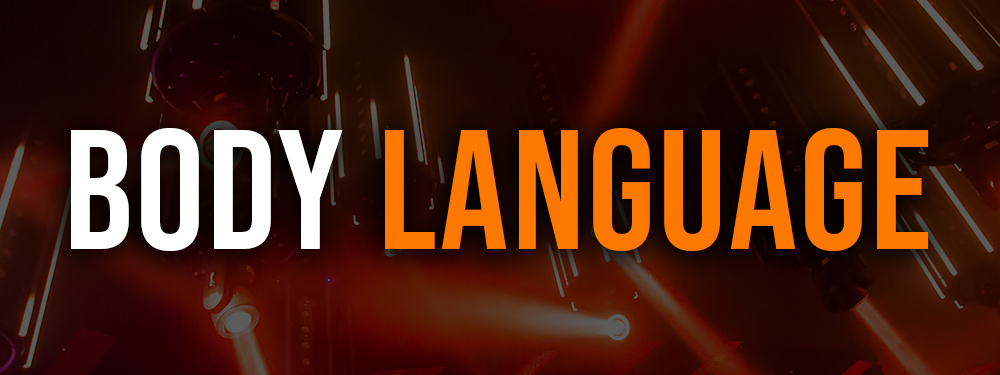
Be Mindful Of Body Language
A crucial component of performing arts, especially acting, is body language. Throughout auditions, roleplays, and on-stage performances, as an actor, your nonverbal communication can make or break your performance.
Understanding and controlling your body language will help you stand out from the crowd and get the respect of directors, casting directors, choreographers, and even your fellow musicians & band members!
Body language is a type of non-verbal communication that consists of gestures, movements, facial expressions, and voice intonation. It may be used to communicate important ideas and feelings to your audience. According to psychologists, nonverbal cues make up up to 90% of human communication.
As a result, as an artist, your body language has a significant impact on your capacity to communicate with and engage an audience.
By observing body language, actors can gain valuable insight into the motivations and emotions of their characters. A character's body can be perfectly mastered by an actor to produce a more captivating and realistic portrayal.
Also, an actor's ability to express emotion through their body can improve both the audience's comprehension of the plot and their engagement with the performance.
After the spoken conversation, body language is the most vivid form of communication and can tell us so much about our internal states.
Keep The Audience Engaged
Keeping the audience interested is crucial for musicians for a variety of reasons. As a music artist, it's critical to maintain audience interest for the following reasons:
First of all, attentive audiences prefer to remain at concerts or plays longer, which might benefit the artist. Engaged audiences are more likely to like the performance and want to stick around for the entire production.
Also, this may result in more favorable reviews, word-of-mouth advertising, and higher ticket prices for subsequent performances.
Second, audiences that are actively involved are more likely to support the artist and their work.
Engaged audiences are more inclined to support an artist's career and develop into devoted followers. Increased record sales, item sales, and streaming traffic may result from this.
Transitions Are Crucial
As a solo performer or even a band in general...you got to have those transitions DOWN!
While performing live music, it's crucial to have no deadness between songs. When performing on stage, you have to keep audience engagement going!
Your audience should know when the next song is, but it shouldn't be a boring transition, spice it up!
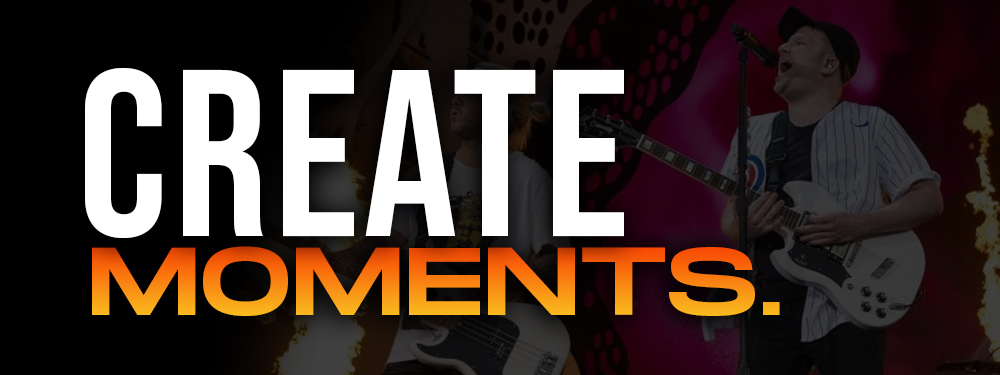
Create Moments
Create special moments that your fans won't forget!
Creating moments is awesome because they make your artist brand a little more personal.
You can't necessarily rehearse these moments in band practice, or rehearsal, so you'll just have to go with the flow & improvise on this one!

Bring Energy To Your Audience
A successful performance as a musician depends on your ability to infuse your audience with energy.
It not only gives your audience a more enjoyable and memorable experience, but it also opens up more chances for you to reach new audiences and build up your fan base.
To start, if you want to make your music successful and get the attention it deserves, you must identify your target demographic. You must engage your audience emotionally and inspire a sense of ownership in them in order to accomplish this.
Second, in order to succeed in the music industry and promote your music successfully, you need to create music that people care about. No matter how many contacts you have in the industry, they will not be motivated to assist you promote your music if they do not think it meets their standards.
You may boost your chances of being noticed and recognized in the market by adding energy to your performances and interacting with your audience.
This will demonstrate to professionals in the industry that you have what it takes to captivate and excite a crowd.
You may create a more participatory and memorable experience that will stay with your audience long after the performance by posing questions to them or inviting them to participate in some way.
Maybe have a band member give out a pair of sticks or a T-shirt! This will make your fans want to come back to future gigs.
You Don't Need Crazy Visuals
Although they might improve a live music performance, graphics are not always required. Visuals can be helpful for one-off performances, but it might be more challenging to design and maintain visually sophisticated performances when performing frequently, according to the artists interviewed.
Alternatively, they argue that an audience can be engaged just as well by a well-executed and musically coherent performance.
Visuals can improve a musical performance, according to a study referenced in Music Psychology, but it also seems that this effect depends on the type of music being performed.
The study discovered that audiences rated video presentations of performances higher than audio alone, but only when the music being performed was very expressive and emotive. This suggests that the impact of graphics on a live performance may vary depending on the genre of music.
Also, even if there are a variety of tools for live music performances, some of which incorporate graphics, not all of them are necessary for a successful presentation.
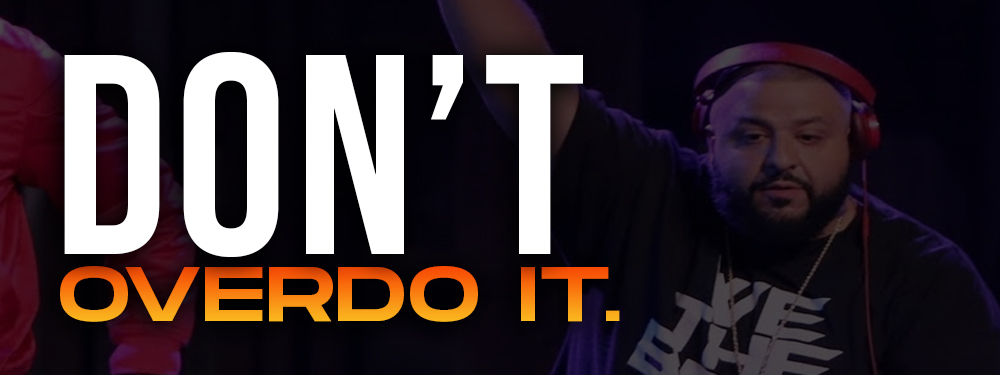
Don't Overdo It
However, none of the search results presented clearly answer the question of why it's crucial to avoid going beyond when playing live music.
Yet, based on popular knowledge, it is crucial when playing live music not to go beyond for a number of reasons.
First off, performing poorly can occur as a result of weariness and physical or vocal strain brought on by overdoing it. It's crucial to keep a balance and refrain from going too far.
Second, going overboard can prevent the musician from maintaining a connection with the audience and from engaging them on a deeper level. To give a performance that connects with the audience without going overboard, it's critical to understand the audience and their preferences.
Finally, going overboard might cause distractions or errors, like forgetting the lyrics or losing track of the music, which can hurt the performance.
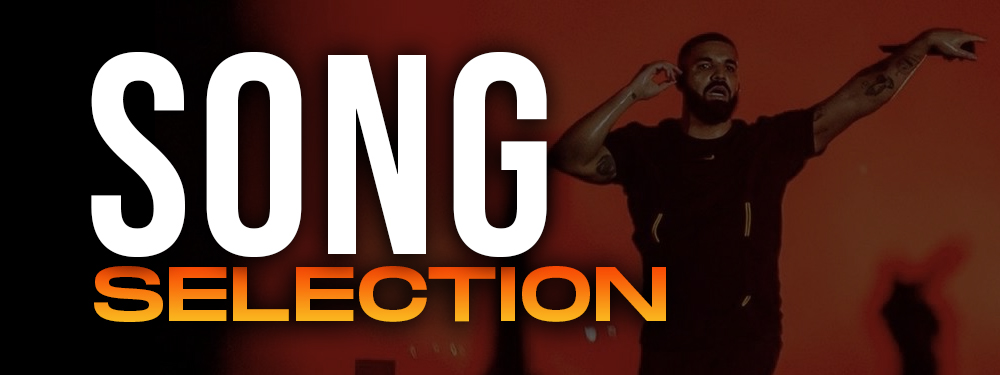
Song Selection
The choice of songs is crucial to a good live music performance. A singer's identity and opportunity to shine can be defined by the song they choose to perform.
It's crucial to choose a song that complements your own style and voice and that you can interpret movingly. Your music selection and sequence should take the unique gig you are playing into consideration.
It is important to play to the room and the audience because different occasions, settings, and crowds could call for a different style of music or a different mood.
Ultimately, song selection has a big impact on how well live music performances go since it can differentiate you from other performers and foster an audience connection.
Don't Make Obvious Mistakes
Live music performances inevitably involve faults, but it's crucial to hide them from the audience. In fact, the ability to bounce back from errors can indicate a strong performer.
No matter how big or tiny your errors may be, it's crucial to keep them from being evident to the audience.
In order to improve for upcoming performances, it's equally critical to admit your errors—even if only to yourself—and learn from them.
Conclusion
When performing music live, everyone wants to sound good and engage audience members.
Yes, having a strong stage performance is hard! The most important thing is to be prepared.
Get your music on playlists now.
It’s time you get your exposure and listeners up - playlisting by Boost Collective has been trusted by 50,000+ artists worldwide.
It’s easy: Search your song, get on playlists, and track your campaign.
What’re you waiting for? Tap in - and get added to playlists in 24 hours.
Join Boost Collective for free here.
